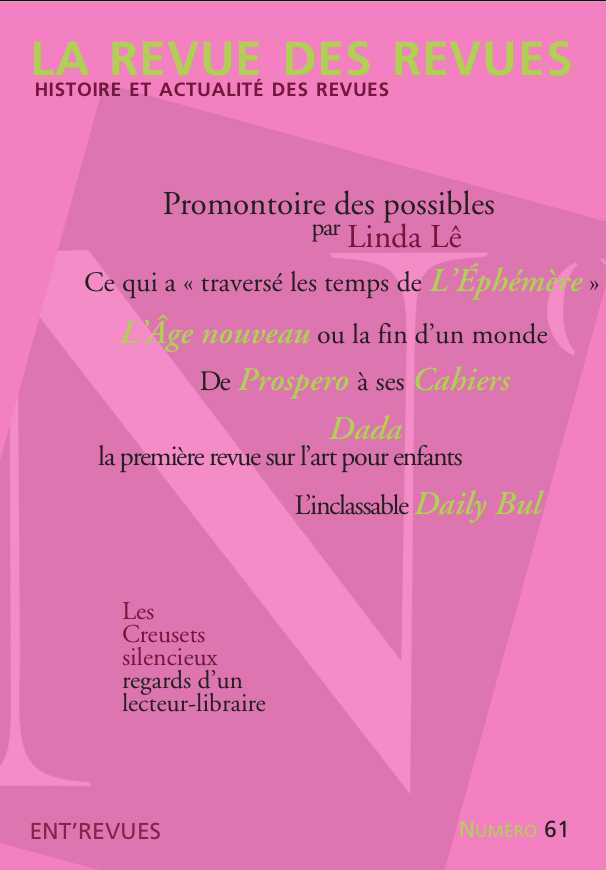par Frédérique Martin-Scherrer
2019, in La Revue des revues no 61
Née à la fin des années cinquante dans le sillage du surréalisme hennuyer, la revue belge Daily-Bul (1957-1983) se définit elle-même comme « la plus désinvolte du monde ». Ses fondateurs, le peintre et sculpteur Pol Bury (1922-2005) et le poète et écrivain André Balthazar (1934-2014), se sont rencontrés en 1950. Par jeu, ils mettent sur pied une institution farfelue, l’Académie de Montbliart, où s’élabore peu à peu la « pensée Bul », qui mêle, dans un esprit de liberté hérité de Dada, la dérision et l’autodérision de manière à brouiller définitivement toute tentative de récupération idéologique. La revue, d’abord marquée par le caractère littéraire de périodiques proches comme Temps mêlés et Phantomas, devient dès 1958 une revue d’artistes, non seulement à travers la nature de son support physique, mais aussi en vertu du fait que sa fonction performative l’emporte nettement sur sa fonction énonciative : elle n’est que l’une des formes que prennent les actions menées par le binôme Bury-Balthazar dans le monde de l’art contemporain. Inventive et diverse dans son aspect, drôle et impertinente dans son propos, la revue Daily-Bul a réuni les contributions de plus de 100 artistes et écrivains parmi les plus connus de cette période du XXe siècle.
The unclassifiable Daily-Bul
Born in the late fifties in the wake of the surrealism of Hainaut, the Belgian magazine Daily-Bul (1957-1983) defined itself as “the most disrespectful of the world.” Its founders, the painter and sculptor Pol Bury (1922-2005) and the poet and writer André Balthazar (1934-2014), met in 1950. For fun, and in a spirit of freedom inherited from Dada, they set up a wacky institution, the Academy of Montbliart, where « Bul thought », which deliberately mixes derision and self-mockery in such a way as to prevent definitively any attempt at reducing it to an ideology, was gradually developed. Their review Daily-Bul, infused by the literary character of similar periodicals of the day, such as Temps mêlés and Phantomas, became, from 1958 onwards, an ‘artists’ review’, not only in terms of the very nature of its physical medium, but also by virtue of the fact that its performative function clearly outweighed its enunciative function: it was only one of the forms taken by the actions of the Bury-Balthazar binomial in the world of contemporary art. Inventive and diverse in its aspect, humorous and impertinent in its purpose, the Daily-Bul magazine brought together the contributions of more than 100 of the best known artists and writers of this period of the twentieth century.
